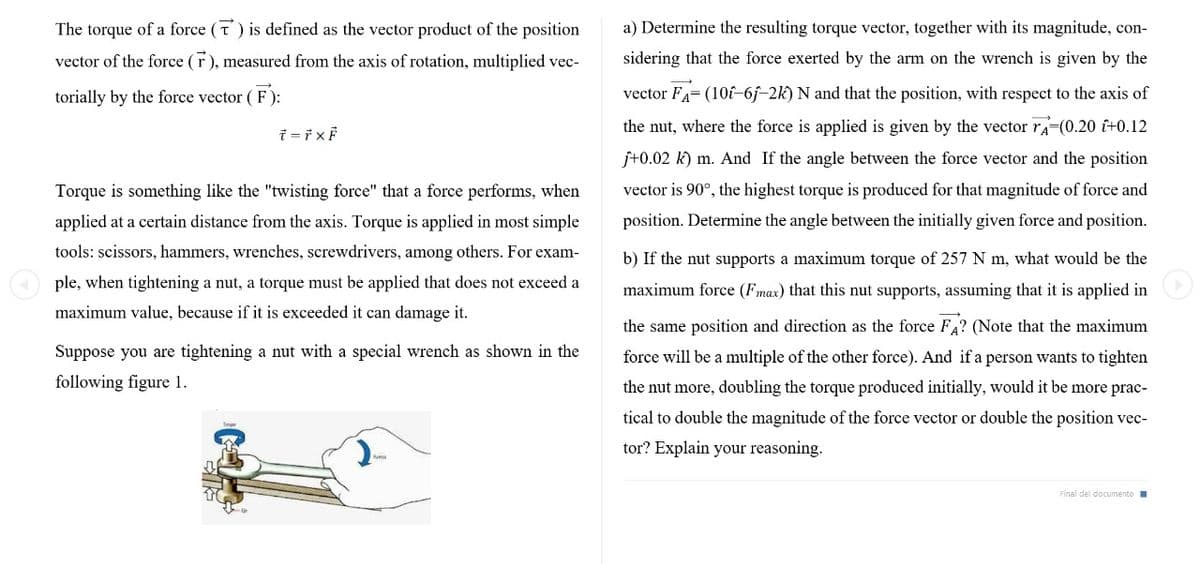The torque of a force (T) is defined as the vector product of the position a) Determine the resulting torque vector, together with its magnitude, con- vector of the force (r), measured from the axis of rotation, multiplied vec- sidering that the force exerted by the arm on the wrench is given by the torially by the force vector ( F ): vector FA= (10f-6f-2k) N and that the position, with respect to the axis of the nut, where the force is applied is given by the vector rA-(0.20 i+0.12 j+0.02 k) m. And If the angle between the force vector and the position Torque is something like the "twisting force" that a force performs, when vector is 90°, the highest torque is produced for that magnitude of force and applied at a certain distance from the axis. Torque is applied in most simple position. Determine the angle between the initially given force and position. tools: scissors, hammers, wrenches, screwdrivers, among others. For exam- b) If the nut supports a maximum torque of 257 N m, what would be the ple, when tightening a nut, a torque must be applied that does not exceed a maximum force (Fmax) that this nut supports, assuming that it is applied in maximum value, because if it is exceeded it can damage it. the same position and direction as the force FA? (Note that the maximum Suppose you are tightening a nut with a special wrench as shown in the force will be a multiple of the other force). And if a person wants to tighten following figure 1. the nut more, doubling the torque produced initially, would it be more prac- tical to double the magnitude of the force vector or double the position vec- tor? Explain your reasoning. Final del documento
Angular Momentum
The momentum of an object is given by multiplying its mass and velocity. Momentum is a property of any object that moves with mass. The only difference between angular momentum and linear momentum is that angular momentum deals with moving or spinning objects. A moving particle's linear momentum can be thought of as a measure of its linear motion. The force is proportional to the rate of change of linear momentum. Angular momentum is always directly proportional to mass. In rotational motion, the concept of angular momentum is often used. Since it is a conserved quantity—the total angular momentum of a closed system remains constant—it is a significant quantity in physics. To understand the concept of angular momentum first we need to understand a rigid body and its movement, a position vector that is used to specify the position of particles in space. A rigid body possesses motion it may be linear or rotational. Rotational motion plays important role in angular momentum.
Moment of a Force
The idea of moments is an important concept in physics. It arises from the fact that distance often plays an important part in the interaction of, or in determining the impact of forces on bodies. Moments are often described by their order [first, second, or higher order] based on the power to which the distance has to be raised to understand the phenomenon. Of particular note are the second-order moment of mass (Moment of Inertia) and moments of force.

Trending now
This is a popular solution!
Step by step
Solved in 2 steps with 2 images








